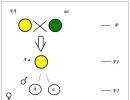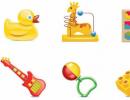How to independently determine the value of a coin. CHR Mobile Review: Coin Definition How To Find Out Which Country A Coin Is From
If a coin that he does not know is in front of a numismatist, the first thing he does is examines it. Numismatic research of a coin involves finding out where and when it was minted, in which mint, its denomination, and also, if possible, which master made it. To determine all this data, different ways, suggesting how to identify the coin.
Definition of a coin
Most in a simple way the definition of a coin is to search for its image or description in the literature. It can be very difficult for inexperienced numismatists to do this, you can spend a lot of time searching without getting anything. If the coin is difficult to identify, then it will not be easy for experienced numismatists.
To limit searches, it is necessary to determine the weight, metal and size of the received coin. For example, if a coin is made of gold and its weight is about 3.5 g, then it is most likely a ducat or florin, minted no earlier than the middle of the 13th century. Silver coins weighing about 4 grams are pennies that were minted during the same period. Thus, knowing the size, weight and metal of the coin, you can significantly narrow your search and limit it to a few books.
It is also important to pay attention to the peculiarities of the minting. For example, bracteates are one-sided coins, minted only in a certain period and in certain countries.
Mint
It is important for novice numismatists to understand how to define the mint of a coin in order to speed up the process of its identification. First, you need to find the date of minting on the coin, as it will help narrow the circle of mints that worked during that period. Usually, near the date or under the denomination of the coin, less often - on the other side of the coin you can see the mint emblem or the initials of the master, if it is old enough.
If the coin has neither the date, nor the emblem, nor the initials of the master, it is very difficult to determine the mint without sufficient experience in numismatics.
The authenticity of the coin
An equally important question is how to determine the authenticity of a coin.
- Since it is quite difficult to mint coins, counterfeiters usually do not possess this technology. They make coins by simple metal casting, so the small details of the minting are usually not very clear. Blurring of small details is the first sign of a counterfeit coin.
- Coins of the 18th century are characterized by metal stratification due to corrosion. It is almost impossible to forge it, so a coin of this age without signs of foliation should arouse suspicion.
- An equally important criterion for authenticity is the weight of the coin.
For a more accurate determination of the authenticity of the coin, it is best to contact the professionals, as they have special equipment that allows you to find out the necessary details.
Coin value
Every numismatist wants to know how to determine the value of a coin. The easiest way to do this is to search for a coin in the appropriate catalogs for numismatists. There is an approximate price for each type of coin. You need to understand that the price will be affected by the safety of the coin: the better it is, the higher the price.
The market price usually differs significantly from the catalog price, since it is influenced by demand, prices for precious metals, coin quality and much more. The most accurate way to determine the price of a coin is to find an absolutely similar one sold and find out its price.
It is believed that numismatics or coin collecting is the “hobby of kings”. People collect them for pleasure, short-term profit or long-term investment. Regardless of the reason for your hobby for numismatics, the ability with which you can determine the value of coins will be a useful skill both for those who want to make money and in order to know everything about their collection. Correct assessment is challenging. Each of the coins has its own value, and not every collector can quickly and accurately determine it. Experience decides a lot in this matter - the more it is, the faster and more accurately the assessment can be made. To figure out how to determine the value of a coin, we suggest that you familiarize yourself with the main nuances in this article.
Factors that determine the value of coins
Before answering the question of how to determine the value of a coin, let's consider the main factors that determine their value.
Coin dating
Basically, the older it is, the higher its cost:
- Not all have dates. There has been a modern dating since the beginning of the 17th century.
- Not all dates are in the Gregorian calendar. Israel and India have their own calendars, and the countries of the Arab world use the Islamic calendar.
Important! If the coin you have is from a country that does not use the Gregorian calendar, use a date converter to determine the Gregorian year, such as CalendarHome.com.
- Not all of them were minted in the year that is indicated on them. For example, American silver dollars dated 1804 were actually minted in 1834-1835 as trial coins, and those minted in 1804 are dated 1803 because the minting was still usable. stamp.

Country of issue
The country in which it was issued directly affects its price, depending on the role of this country in history or the possibility of minting them. Most often on the front or back side the country of issue is indicated - it can be minted in Latin, the country's own language or in an alphabet that differs from the Latin alphabet.
Important! For the English equivalent, the local name of the country of issue can be viewed on Nations Online.

Rarity
The estimated value is also influenced by the number of coins of this type around the world, most often this factor is more important than its age.
Rarity depends on such factors:
- How many of them were produced in total. For example, the 1914D Lincoln Penny is a very hard-to-find coin because only 1,193,000 copies were produced. Trial Australian pennies of 1930 survived only in 6 copies.
- Place of minting. Some mints produce coins for general circulation, while others mint only commemorative coins.
- Change of design.
- Change in composition.
- Defects in coinage.
- Withdrawal from circulation.

Demand
Despite the rarity, the demand among collectors also plays a very important role in the value of a coin.
Demand can depend on the location of a particular numismatist, or it changes over time, as does the popularity among coin collectors.
State
The better it is preserved, the more numismatists are willing to pay for it.
The condition is assessed in two ways:
- Sheldon scale. According to it, the state is divided into 70 points. One point is the lowest and seventy is the highest.
Important! This method is used most often.
- Standard descriptive characteristics range from low “poor” to high “excellent”, while intermediate descriptive characteristics are increasing “acceptable”, “almost weak”, “weak”, “fair”, “good”, “very good”, “excellent”, “Almost perfect”.
How do you know the value?
The question of how to determine the value of a coin sooner or later begins to interest every collector. Let's consider in more detail the main ways with which you can find out how much it costs.
Search system
You just need to fill in the sentence “How much is the coin worth?” In a search engine convenient for you. This is the most common and simplest way, but not always the correct one. Most often, a huge number of different links are issued, and only a couple of them will be the correct price. On the Internet, free bulletin boards are overflowing with various offers of sale for a lot of money, it is not clear why.

Coin catalog
This catalog makes it possible to identify ancient coins and inform the cost of all samples that are listed in it.
Important! Use the latest editions because the value of the coins changes every year.
Main sources:
- A Guide to United States Coins by R.S. Yemen, it is also called the "Red Book" because of the cover.
- Source for coins from all over the world "Krause Standard Catalog of World Coins".
- Catalog-directory "Konros" Coins of the RSFSR, USSR, RF.
- A.I. Fedorin “Coins of the country of the Soviets. Catalog".

Appraisers
Many collectors receive formal appraisal training to determine the value and condition of coins. This service is not free, but they will tell you the value of the coin.
Important! If you already have a certain number of coins made of different metals, or maybe other valuable antiques, and you want to bring them into the appropriate form for sale or storage, use our selection of safe ways:
Completed auctions
Their advantage is that they can be used to determine the value of a coin in any condition. The error is no more than 10%. To find out the value, you need:
- Go to the auctions page.
- Open the archive and enter keywords in the search bar.
- After - a description will appear, most often this is a photo with a small description. Look at the final rate at which the sale was made, it is located next to the description.
- Explore several of these auctions to get an idea of how much your coin is worth.
Important! Do not forget that auctions take a commission from the deal if you want to sell your rarity.
Among the coins modern Russia of 1997–2013 edition, numismatists most of all quoted copies from small lots, for example, minted when checking equipment. Usually, they are not officially put into circulation, but somehow they still seep into the wallets of citizens. In addition, coin collectors, like philatelists, value defective items. If you are lucky and, using our mini-guide, you will find a rarity, either look for rare coin buyers using an Internet search engine, or put your find at a numismatic auction. There are also enough links to such resources on the network.
50 kopecks 2001
Moscow Mint
Price: about 200 thousand rubles
Only 2 copies are known. Numismatists are sure that there are no other coins from this batch. If you find the third one, you have won the jackpot.
1 ruble 2001
Moscow Mint
Price: about 200 thousand rubles
As in the case of 50 kopecks in 2001, only 2 copies are known, and experts believe that others do not exist.
5 kopecks 2002 and 2003
No mint mark
Price: up to 300-500 rubles.
These defective coins were released into circulation in small amount inadvertently. They lack the mint mark on the obverse. There are few of them, and coin collectors love rare series of coins.
5 rubles 1999
Price: about 250 thousand rubles
The most expensive coin in Russia. 1 original copy is known. Rumor has it that after its minting, the form was destroyed, but perhaps this is a lie, and after a while other similar coins will surface on the market.
1 ruble, 2 rubles and 5 rubles of 2003
St. Petersburg Mint
Price: up to 15 thousand rubles.
According to one version, these coins were minted for collection sets in 2003 in a limited edition of 15 thousand copies, and then, for some reason, the sets did not go on sale, and these coins ended up in circulation.
2 rubles 2001
Moscow Mint
Price: about 150 thousand rubles
Our experts are aware of one such coin found in the 2002 collection set. However, there are persistent rumors among Russian numismatists that other two-ruble coins from this batch have also come into circulation.
Keep in mind that the value of a coin is highly dependent on its condition. The most expensive are new and shiny ones, the cheapest are those worn out and run over by a tram. Pay attention to the mint mark on the back (obverse) of the coin - these are letters either under the front leg of the horse of St. George the Victorious, or under the left paw of a two-headed eagle.
Nowadays the slogan "Time is money" is becoming more and more relevant. And the period for making this or that decision should be minimal. Buying and selling coins is no exception. There is a way to quickly find out the value of a particular coin if you have a device connected to the Internet at your fingertips.
Perhaps the catalog is more efficient?
Static directories are a thing of the past. Nowadays, everything is changing so rapidly that printed publications and web pages do not keep up with the news of today. The dynamic bases of the auction aisles come to the fore. Only they will reflect that for some coins due to the crisis and difficult times, the price did not rise, but decreased. And a great chance opened up to purchase a coin for the collection, the nest of which had remained empty for a long time. Or there has been a sharp increase in the value of coins, which you have with a reserve. And it's time to sell them.
Dynamic bases are constantly being adjusted, taking into account the results of completed trades. Of course, they trust the bases with the greatest number of passes, taking into account the most recent ones. They reflect the picture of today. At the time of this article creation, our database contains information on more than twelve and a half million auction passes.
In a pile of coins, a specimen that seemed rare to you flashed? Let's say this is a nickel in 1934, for which the static price tag indicated the value "9000 rubles". Let's check how to quickly find out its objective price using the capabilities of our service. To do this, on the main page of our site, click on the "Coin value" position and enter the name of our coin in the "Find a coin in the catalog" field that appears. The search engine tries to tell us certain options from which we choose ours. In this case, it is just "5 kopecks 1934", since a patch of Tuva is strikingly different in design, and it is useless to look for remakes in coin heaps.

By clicking on the "Find coins" button, we find ourselves on the catalog page, where a large image of the specimen is placed and the price ruler is given depending on the degree of safety of the coin. A keen eye will immediately notice that the price of a VF instance is unlikely to exceed the price of an XF. But this is the principle of dynamic value formation, which is influenced by many factors. Perhaps "XF" coins were sold for a long time or during an unfavorable period of falling demand, and copies of "VF" were put up when these nickels were snapped up like hot cakes. Moreover, the degree of preservation is taken from the description of the auction, and the seller may consider it several categories higher than it seems to the buyer.

Any user of the catalog can evaluate the degree of safety for himself when he goes directly to the list of completed auctions. Information can be sorted by auction date (early / late), by the degree of preservation specified in the auction, and by the final price (most expensive / cheapest). Minute analysis will show the real picture of affairs. And it will immediately become clear at what price the specimen that shines so temptingly in the coin heap would have gone approximately. Using our catalog allows you not to overpay for ordinary coins and rejoice when you have a chance to get an infrequent coin at a low price. True, here you need to be well versed in the topic of forgeries of the USSR, but about them on our website.
Express appraisal of the coin from the wallet
Those who have read the article about the rare and expensive coins of modern Russia will not miss the rarity if it went to change. But what if you have a coin in your hands, about which there is not a word in the article? Let's see if our catalog understands the coins of our day? For example, let's take the most common steel ten of 2010. Here it is already necessary to pay attention to which court issued this coin. For help identifying your logo, see the article on coin marks. Suppose we got a copy minted by SPMD.

Having reached the catalog page the same way, we will see a distressing inscription that the value of the coin is written on it, but going down to the list of auction passes, we will find that there are many trades, the total amount of which significantly exceeded the face value. When analyzing, it turns out that coins with a 180 degree rotation, specimens of rare preservation and a rare variety, where the lines touch the inner walls of zero, are valued.

Going to the "Description" section, we read the article on how to separate the rare ten from the usual one. It remains to be seen whether the coin from our wallet falls into one of these categories. If not, then feel free to release it into circulation.
Express assessment of the coin of Imperial Russia

Another thing is the coins of tsarist times. Especially if they are made of gold or silver. Let's check the catalog for the knowledge of the prices of the last Russian emperor's chervonets. All found coins can be examined in minute detail. Just click on the obverse or reverse image. A window with an image of a dozen will instantly appear on the screen, and the mouse cursor will turn into an additional magnifying glass. Here, not a single scratch and not a single speck on the coin field escapes our gaze.
Advanced search capabilities
Having mastered quick option search, let's proceed to the specialized one. Pay attention to the big blue button "Search by safety, weakness and auctions". By clicking on it, we will see the advanced search functions. By moving the green buttons on the safety scale, we will exclude from the sample frankly killed specimens and coins of exceptional safety. Below we see the names of auction houses and Internet auctions. If we don't like one of them, uncheck the box next to its name. If, on the contrary, we need a single auction house, uncheck the boxes from all at once and put down only it. Don't miss the arrow yellow color: if the coin is made of gold, silver or platinum, then the program will show the dynamic value of the weight of the metal according to stock quotes as of the date of viewing. Let's narrow down the search by ordering only coins in weak ones by clicking on the "Lots in weak" button. Indeed, the sample that appears on the screen shows us coins exclusively in weakness. Let's pay attention to such an interesting parameter as "Barcode".

By clicking on the link, we find ourselves in a specialized search form, where the barcode that we marked is already present. We press the button "Find lots", and the search engine offers us a selection of tens of gold, whose barcode matches the given one weakly.

Search by auctions
Special attention should be paid to such an opportunity as a search through auctions, where we find ourselves by clicking the item of the same name in the main menu. Having filled in the search box with the name of the coin we are interested in (for example, the imperial of 1897 is taken), we can safely press the button "Find lots", not forgetting to choose which auctions we are interested in: active or completed.

Looking at the results, we will be amazed at the variety of auction houses and online auctions included in the sample. But this will not surprise anyone who is already aware that our project contains the largest database in the world in terms of the number of coin passes. Of course, what was said above cannot cover all the possibilities of the site's search engine (especially since it is constantly being supplemented and improved). But even these opportunities are enough to not get lost in painful thoughts in front of the coin kiosk "How much will I overpay?"

As part of our portal there is a "Monetnik" store (99% of buyers), where you can immediately buy a coin you like when viewing auctions. If the coin is not in the store at the moment, then you can pre-order it by clicking the button "Notify me about the appearance of this coin in the online store shop.site". For the button to be active, you need to register on our website. After subscribing, a specialized page will open where you can view the ordered coins or cancel the order by turning off notifications about the appearance of these coins. An authorized user can always find a link to his page with tracked coins by hovering the mouse cursor over this button.
Authentication
You've probably heard that the country was flooded with forgeries of silver rubles with portraits of emperors and empresses. On some of the nuances of the definition of "copies" and "replicas". But you yourself can become an expert if our catalog is at hand. After bringing up a few photos on the screen, simply compare the suspicious coin with the originals, comparing small details. To do this, hover the cursor sequentially over the coins of interest and use the icon in the form of four squares with the explanatory inscription "Click on the icon to view several photos on one screen."
A coin is not only one of the forms of money or a piece of metal, but also a valuable object from the point of view of history. Numismatists are ready to pay colossal sums of money, reaching several million dollars, for rare original copies. Collectors who do not have such amounts of funds also seek to replenish their collection with unique coins. This is used by scammers who have learned to professionally counterfeit metal money. For this reason, all coin collectors are wondering how to determine the authenticity of a coin.
Counterfeiting
Before proceeding to consider the methods of making bogus coins, you should find out the difference between fake copies and fakes. Counterfeit coins are produced for further launch into the circulation of money. Counterfeits are created with the aim of extorting money from numismatists-collectors. Often, scammers offer fakes as remakes, but in fact there is nothing in common between them. For reference: a remake is a coin minted after the prototype of the original collectible coin. In most cases, remakes are minted with genuine stamps.
Sestroretsk ruble - podliinik
In Russia quality workmanship counterfeiting coins began as early as the seventeenth century. But to this day, the methods of producing counterfeits have improved significantly, which makes it very difficult to distinguish counterfeit coins from originals. The most common methods of making counterfeits include:
- Casting: According to this method, the alloy for casting coins is cast into special shapes that closely imitate the obverse and reverse of the original coin. The use of electrolysis copying technology makes it possible to produce high quality counterfeits.
- Use of a new stamp: for the minting of counterfeit coins, a new stamp is made, copying the design of the obverse and reverse of the original copy.
- Production of an electroplated copy: to begin with, copies of the reverse and obverse of the original are made from plastic or plaster. After that, a conductive layer was applied to the finished plates, and copper was deposited on it by the electrolysis method. The plates imitating the obverse and reverse were fitted to each other and welded so that the thickness of the counterfeit completely coincided with the thickness of the original coin.
- Refinement: according to this method, an ordinary genuine coin is taken and, with the help of special technologies, the necessary adjustments are made regarding the date, the name of the mint, etc. There is also a practice of restoring images and dates.
- Embossing copying: In this method, the alloy is cast into a matrix created by laser cutting tools.
Despite the prevalence of cases of selling counterfeit coins as originals, copies are also in demand among numismatists. For example, Tsarist Russia coins made of silver, gold, or base metal are very popular with collectors. The most popular royal coins are associated with the period from the eighteenth century to 1916. For a silver copy of the coin, you will have to pay up to three thousand rubles, but a copy of a simple metal will cost a numismatist about 400 rubles.

How to distinguish a fake from an original?
Distinguishing an original coin from a counterfeit is not as easy as it might seem, but all because copies can be of such high quality that even an expert will not be able to immediately determine the authenticity.
Among numismatists, there are ways to independently identify a counterfeit coin. How to check a coin for authenticity without being a professional:
- If possible, you should take a coin, evaluate the color of its metal and patina (a layer that forms on the surface of the coin over time as a result of metal oxidation). It is worth noting that in order to give the coins an antiquity effect, craftsmen skillfully forge the patina using such methods as baking, staining, fumigating with tobacco smoke, etc. It is not difficult to identify a fake patina. First, it will spread over the metal in the form of rounded spots. Secondly, the patina will be located only on the surface of the coins, while it will not be on scratches and scuffs. Bright patina spots on silver are also a sign of counterfeiting.
- In good daylight, the entire surface of the coin should be viewed. If you can see another metal showing through the abrasions, then most likely the coin is a low-quality Chinese counterfeit.
- The shine of the metal also requires special attention. If the coin is too shiny, it means that it was made very recently. The dullness of the coin should also alert the numismatist, since it is typical for gold counterfeit coins that do not contain gold, and a matte plaque is created due to gilding. A greasy sheen indicates that a coin marketed as a precious metal contains a large amount of zinc.
- It is recommended to examine the coin with a magnifying glass. An inhomogeneous metal surface will indicate that the specimen is a fake.
- When evaluating cast coins, it is important to pay attention to the workmanship of the cast coin mug. Ideally, it should have a clear outline, but the presence of a dull edge, remnants of bubbles and foreign particles on the metal surface indicates that the coin is made of a low-quality alloy.
- The parameters (diameter and thickness) of the purchased copy should be compared with the parameters of the original coin, if any. It is also important to compare the mass of the two coins.
- You should also evaluate the quality of the elaboration of small images minted on the coin and compare them with those depicted on the standard.
- If the authenticity of coins made of silver or gold is being evaluated, then you should take one copy and throw it on a hard horizontal surface, for example, a table. When the precious metal hits the surface, it will emit a clear, ringing sound.
- If a coin consists of a specific two-component alloy, then its authenticity can be assessed using the hydrostatic weighing technique. Its essence lies in determining the mass of a coin in the air and in the water. The difference in mass in grams, if two originals are compared, will be equal to the volume of the evaluated coin. However, if the alloy contains a third component, then this method is not suitable for determining the authenticity of a coin consisting of a three-component metal alloy.
Every numismatist should also be aware of which coins are most often counterfeited:
- hryvnia 1705;
- 1 ruble of 1707;
- 1 ruble of 1721;
- 1 ruble of 1725;
- 20 kopecks in 1764;
- 1 ruble of 1834;
- coins of the Soviet period and others.
In order not to fall for the bait of a fraudster, a numismatist should know how many originals and remakes of this or that coin exist in the world. You should also refuse to buy collectible items from random people. It is recommended to purchase coins from an experienced numismatist, because only in this case you can protect yourself from buying a fake.






